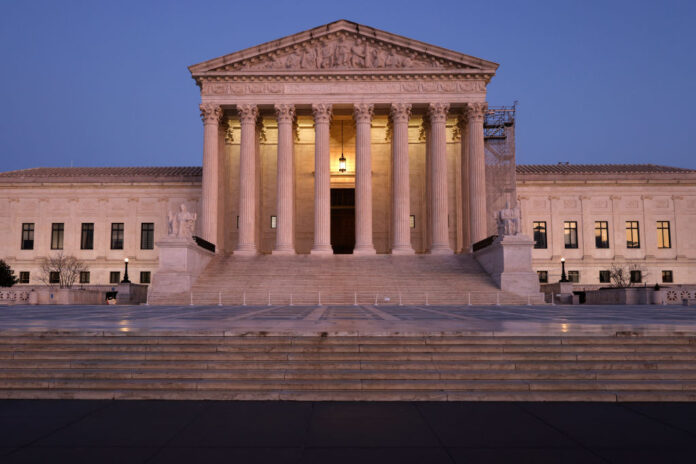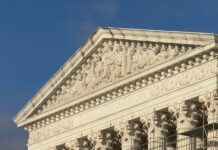The Supreme Court on Thursday afternoon turned down a request from an Alabama inmate to block his execution, which is scheduled for today. In an unsigned order, the justices denied Anthony Boyd’s plea to put his execution on hold and to decide whether executing him by nitrogen hypoxia would violate the Eighth Amendment’s ban on cruel and unusual punishment. Boyd had asked to be executed by a firing squad instead. As is customary in cases involving requests for emergency relief, the court did not provide any explanation for its decision.
Justice Sonia Sotomayor dissented from the court’s decision to allow the execution to go forward. In a nine-page opinion joined by Justices Elena Kagan and Ketanji Brown Jackson, Sotomayor wrote that “Boyd asks for the barest form of mercy: to die by firing squad, which would kill him in seconds, rather than by a torturous suffocation lasting up to four minutes. The Constitution would grant him that grace. My colleagues do not.â€Â
Boyd was convicted and sentenced to death for his role in the 1993 kidnapping and murder of Gregory Huguley. At the time of his sentencing, Alabama used electrocution as the default method of execution. In 2002, the state changed that method to lethal injection; it added nitrogen hypoxia as an authorized method of execution 16 years later.
In June of this year, the state’s attorney general, Steve Marshall, asked the Alabama Supreme Court to allow Boyd to be executed by nitrogen hypoxia. Boyd went to a federal district court just over a month later, where he argued that doing so would violate the Eighth Amendment. Specifically, he argued (in the words of the federal court) that the state’s nitrogen hypoxia protocol “poses a substantial risk of severe pain and terror by depriving an inmate of oxygen while he is still conscious, which Boyd says will last at least two minutes and as long as seven minutes.â€
The federal district court turned down Boyd’s request to put his execution on hold. Boyd, it said, had not “marshalled sufficient evidence that either Utah’s firing-squad protocol or MAID [medical assistance in dying] would significantly reduce a substantial risk of severe pain caused by†the state’s nitrogen hypoxia protocol. The U.S. Court of Appeals for the 11th Circuit upheld that decision, prompting Boyd to come to the Supreme Court earlier this week.
In an order issued on Thursday afternoon, the justices declined to intervene and put Boyd’s execution on hold.
Sotomayor began her dissent with a frank description of how she saw the stakes in the case, asking readers to turn on a timer for four minutes: “Now imagine for that entire time, you are suffocating. You want to breathe; you have to breathe. But you are strapped to a gurney with a mask on your face pumping your lungs with nitrogen gas. Your mind knows that the gas will kill you. But your body keeps telling you to breathe.†“That is what awaits Anthony Boyd tonight,†Sotomayor wrote. “For two to four minutes, Boyd will remain conscious while the State of Alabama kills him in this way.â€
Sotomayor noted that nitrogen hypoxia had originally been described “as a more ‘humane’ alternative to lethal injection.†But the experience of Alabama and Louisiana, which have collectively executed seven people using nitrogen hypoxia, she said, indicates “that nitrogen hypoxia is not at all what it was promised to be.†For example, she wrote, during his 2024 execution, Kenneth Smith “made ‘violent movements’†and “convulsed for about two to four minutes, shaking the gurney several times.†During the executions that followed, she continued, “witnesses have reported similar observations each time,†including “apparent consciousness for minutes, not seconds†and “violent convulsing, eyes bulging, consistent thrashing against the restraints, and clear gasping for the air that will not come.â€
Sotomayor acknowledged that “[t]he Eighth Amendment ‘does not guarantee a prisoner a painless death.’†“But,†she concluded, “when a State introduces an experimental method of execution that superadds psychological terror as a necessary feature of its successful completion, courts should enforce the Eighth Amendment’s mandate against cruel and unusual punishment. Allowing the nitrogen hypoxia experiment to continue despite mounting and unbroken evidence that it violates the Constitution by inflicting unnecessary suffering fails to ‘protect the dignity’ of ‘the Nation we have been, the Nation we are, and the Nation we aspire to be.’â€Â
Cases: Boyd v. Hamm
Recommended Citation:
Amy Howe,
Court turns down man’s request to die by firing squad,
SCOTUSblog (Oct. 23, 2025, 7:18 PM),
https://www.scotusblog.com/2025/10/court-turns-down-anthony-boyd-request-to-die-by-firing-squad/





